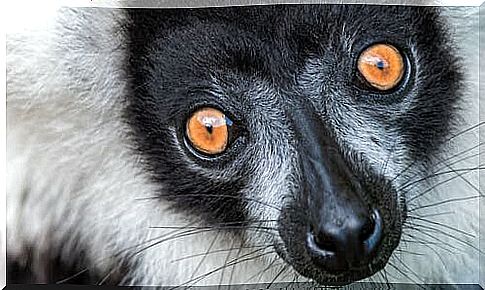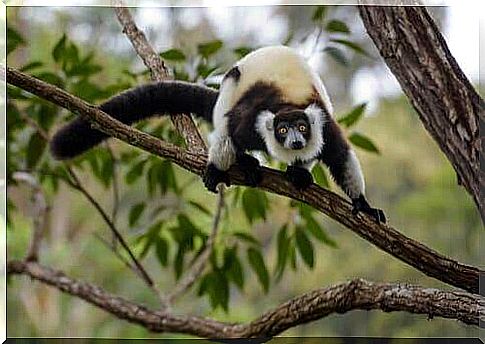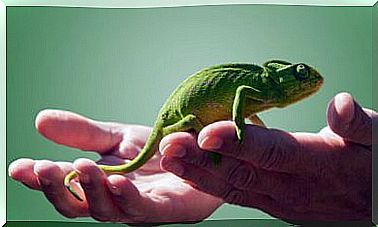Varecia-black-and-white: Characteristics, Behavior And Habitat

The black-and-white varecia, also known as the black and white lemur, is an endangered species of lemur, a group of animals that encompasses more than 100 species of primates.
Characteristics of black-and-white varecia
This animal in question, the black-and-white varecia, is considered the largest lemur, which does not mean that it is the largest living lemur, since there are several families that are included within the Madagascar lemurs.
This primate reaches 120 centimeters and can weigh more than four kilos, so it weighs twice as much as the ring-tailed lemur, which is the most popular species.
Their reproductive characteristics are curious, as they are more similar to those of smaller nocturnal lemurs: larger litters, short gestation time and very early maturity. In fact, compared to other species that tend to have only one offspring, or at most two, the black-and-white varecia can have litters of up to six offspring.

Behavior of black-and-white varecia
The black-and-white varecia is a diurnal arboreal animal, like many primates, so it spends most of the day in the treetops of the eastern island. This animal is one of the most frugivorous lemurs, so it even eats nectar and flowers, as well as fruit.
This diet can reach a consumption of 92% in fruits, although this depends on the time of year. It was observed that females consume more than males during the dry season, especially during the gestation period, when they consume more leaves and flowers.
As with other lemurs, the black-and-white varecia is one of the species in which females rule. Usually, they win fights against males, which is important because, as mentioned, females consume more food, so they need to dominate food resources.
Their groups adapt well to the resources of the environment in which they live. Even in resource-poor areas, the group can split and come together.

As for communication, these animals have a series of curious and very powerful calls, which are surpassed only by the alouatta palliata (howler). These calls are used to communicate movement or predators.
Habitat and conservation
Like other lemurs, these animals live in Madagascar. We often don’t imagine that there are dozens of lemurs and that they reach 100 species. This means that there are nocturnal, terrestrial and dryland lemurs and lush forests.
They are an endangered species, from which 80% of its population has declined in the last 27 years. Although they have predators such as the cesspool, their main threat is deforestation and hunting for food. Attempts were made to reintroduce this species into captivity, but many individuals were hunted by pits.









